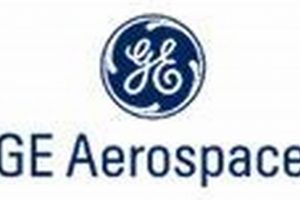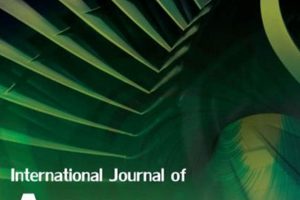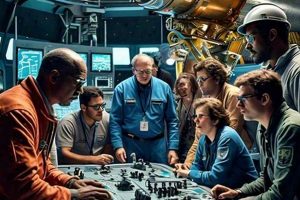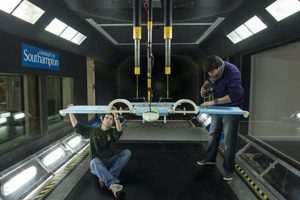Educational opportunities, accessible without cost, focused on the design, development, and testing of aircraft and spacecraft are becoming increasingly available. These learning resources typically cover fundamental principles such as aerodynamics, propulsion, structural analysis, and orbital mechanics. For instance, an introductory series of video lectures covering the basics of flight dynamics would constitute such a resource.
The significance of these accessible educational pathways lies in their ability to democratize learning and expand access to a technically demanding field. Individuals from diverse backgrounds can explore their interest in aviation and space exploration without immediate financial commitment. Historically, formal aerospace education required substantial investment; these resources offer an alternative entry point, potentially identifying and fostering talent that might otherwise remain untapped.
Subsequent sections will delve into the specific types of materials available, platforms that host them, and potential pathways for utilizing this knowledge toward further educational or professional goals within the aerospace sector. The following content will also address the limitations and considerations associated with self-directed learning in this complex discipline.
Success in self-directed aerospace engineering studies requires a structured approach and realistic expectations. The following tips are designed to maximize the benefits of freely available learning resources.
Tip 1: Establish a Foundational Understanding of Mathematics and Physics: A solid grounding in calculus, differential equations, linear algebra, and Newtonian mechanics is crucial. Seek introductory materials in these areas prior to engaging with specialized aerospace content.
Tip 2: Prioritize Fundamentals over Advanced Topics: Begin with introductory courses on aerodynamics, propulsion, and structural analysis. Resist the temptation to immediately delve into complex subjects like hypersonic flow or advanced composite materials.
Tip 3: Utilize Multiple Resources for Comprehension: Relying on a single source can be limiting. Compare explanations from different providers to gain a more comprehensive understanding of complex concepts. Complement video lectures with textbooks or online articles.
Tip 4: Focus on Practical Application Through Simulation and Modeling: Theoretical knowledge is insufficient without practical application. Utilize simulation software (e.g., OpenFOAM, XFLR5) to model and analyze aerospace systems. Many free or open-source tools exist for this purpose.
Tip 5: Join Online Communities and Forums: Engage with other learners and experienced professionals in online forums and communities. Seek clarification on challenging concepts and participate in discussions to deepen understanding.
Tip 6: Build a Portfolio of Projects: Document completed projects, simulations, and analyses to demonstrate acquired skills. This portfolio can be invaluable for future educational or professional opportunities. A well-documented design of a simple airfoil, with accompanying CFD analysis, can be a strong portfolio piece.
Tip 7: Understand the Limitations of Unaccredited Learning: While these resources offer valuable knowledge, they do not typically lead to formal accreditation. Recognize the need for further formal education or professional certification to pursue specific career paths.
Mastering this subject through freely accessible resources requires dedication and disciplined self-study. A structured approach, combined with practical application and community engagement, can yield significant benefits.
The following sections will explore pathways for integrating these learnings into formal educational programs and professional development opportunities.
1. Accessibility
The concept of accessibility is paramount when considering open educational resources within the field of aerospace engineering. It directly addresses the ability of individuals, regardless of geographical location, socioeconomic status, or prior academic background, to engage with and benefit from educational materials related to aerospace principles and practices.
- Geographical Reach
Free resources transcend geographical barriers, enabling individuals in remote or underserved regions to access educational content previously unavailable to them. Lecture recordings from universities or online courses on platforms like Coursera or edX provide learning opportunities to those unable to attend traditional brick-and-mortar institutions. The impact on global knowledge dissemination within the aerospace field is substantial.
- Economic Equity
The absence of tuition fees removes a significant financial obstacle to education. Individuals from lower-income backgrounds, who might otherwise be excluded from pursuing aerospace engineering due to cost constraints, can explore the field and acquire foundational knowledge. For example, a student in a developing nation can learn about computational fluid dynamics using free software and online tutorials without incurring substantial expenses.
- Level of Prior Education
Many open educational resources are designed to cater to a broad audience, including those with varying levels of prior academic preparation. Introductory courses often provide foundational knowledge in mathematics and physics, making them accessible to individuals without a formal engineering background. This widens the pool of potential learners and allows for self-directed learning based on individual pace and comprehension.
- Open-Source Software and Tools
Accessibility extends beyond educational content to include the software and tools necessary for practical application. The availability of free and open-source software for simulation, modeling, and analysis allows individuals to engage in hands-on learning without the need for expensive commercial licenses. Examples include OpenFOAM for computational fluid dynamics and NASA’s OpenVSP for aircraft design.
The interplay of these factors underscores how accessibility reshapes the landscape of aerospace engineering education. It democratizes learning, expands opportunities, and fosters a more diverse and globally connected community of aerospace enthusiasts and professionals. However, the effectiveness of these resources is contingent upon the individual’s commitment, self-discipline, and ability to navigate the potentially overwhelming volume of available information. Furthermore, the lack of formal accreditation associated with many free resources necessitates careful consideration when pursuing professional certification or employment opportunities.
2. Fundamentals
A solid grasp of fundamental principles is indispensable for meaningful engagement with any aerospace engineering curriculum, including freely available resources. These foundational concepts act as the building blocks upon which more advanced topics are constructed. Without a firm understanding of mathematics, physics, and basic engineering principles, learners may struggle to comprehend the complexities inherent in aerospace systems and design.
The availability of no-cost educational resources amplifies the importance of these fundamentals. Learners often lack structured guidance or formal instruction when utilizing such materials, making a self-driven understanding of foundational concepts even more critical. For example, a learner attempting to understand airfoil design using online materials will require a working knowledge of fluid dynamics, calculus, and basic aerodynamics. Freely accessible lectures on differential equations, coupled with interactive simulations of fluid flow, offer one pathway for acquiring this necessary foundation. The cause-and-effect relationship is clear: insufficient knowledge of fundamentals directly impedes comprehension and application of more advanced aerospace engineering concepts. This, in turn, limits the effectiveness of self-directed learning through free resources.
In conclusion, the effectiveness of educational opportunities relies heavily on the learner’s pre-existing knowledge of fundamental principles. While open educational resources provide accessibility, the responsibility lies with the individual to prioritize the acquisition of this foundational knowledge, thus enabling meaningful and productive self-directed learning within the challenging field of aerospace engineering. Challenges include identifying reliable sources for fundamental knowledge and ensuring a comprehensive understanding before moving on to more specialized topics.
3. Simulation
Within the context of freely accessible aerospace engineering education, simulation represents a crucial bridge between theoretical knowledge and practical application. The absence of physical laboratories in many “aerospace engineering free course” offerings necessitates a reliance on simulated environments to visualize, analyze, and validate engineering concepts. This dependence underscores the importance of understanding and utilizing simulation software as an integral component of self-directed learning. Simulation tools allow learners to model aerodynamic forces on airfoils, analyze structural stress on aircraft components, and predict the trajectory of spacecraft, providing insights that would otherwise be inaccessible without costly physical experimentation. The cause-and-effect relationship is evident: effective use of simulation enhances comprehension, strengthens problem-solving skills, and ultimately improves the overall learning experience.
Numerous examples illustrate the practical application of simulation in complimentary aerospace engineering education. Open-source software packages like OpenFOAM for computational fluid dynamics (CFD) and NASA’s OpenVSP for aircraft design enable learners to conduct virtual experiments and analyze the performance of various aerospace systems. A student studying propulsion, for instance, could use a CFD simulation to analyze the flow field within a rocket nozzle, optimizing its geometry for maximum thrust. Similarly, learners can use structural analysis software to assess the load-bearing capacity of an aircraft wing, identifying potential points of failure and optimizing the design for structural integrity. The integration of these tools into free online courses and tutorials provides invaluable hands-on experience, preparing students for future endeavors in the aerospace field.
In summary, simulation plays a vital role in democratizing aerospace engineering education by providing a cost-effective and accessible means of exploring complex engineering concepts. While free educational resources offer an entry point into the field, the effective utilization of simulation software is paramount for translating theoretical knowledge into practical skills. Challenges remain in ensuring that learners have the computational resources and technical expertise necessary to effectively utilize these tools. Nevertheless, the integration of simulation into self-directed learning represents a significant advancement in aerospace engineering education, fostering a new generation of engineers equipped with the skills necessary to address the challenges of the 21st century.
4. Community
The element of community serves as a critical support structure within the context of freely accessible aerospace engineering education. Given the self-directed nature and potential isolation associated with utilizing open educational resources, the presence of a robust community significantly impacts learning outcomes. This community can take the form of online forums, discussion groups, or collaborative project platforms, providing learners with opportunities to interact, share knowledge, and seek assistance from peers and experienced professionals. The causal link is clear: active participation in a relevant community fosters deeper understanding, enhances problem-solving capabilities, and mitigates the challenges associated with self-paced learning. For example, learners struggling with a specific aerodynamic principle can post questions on an online forum and receive guidance from individuals with expertise in that area. Conversely, advanced learners can contribute their knowledge by answering questions and mentoring others, reinforcing their own understanding and solidifying their expertise.
The importance of a community within “aerospace engineering free course” settings extends beyond mere academic assistance. A thriving community can foster a sense of belonging, motivating learners to persevere through challenging material and overcome obstacles. Collaborative projects provide opportunities to apply theoretical knowledge in a practical setting, simulating the teamwork and problem-solving dynamics encountered in real-world engineering projects. Furthermore, community interaction facilitates networking, connecting learners with potential mentors, collaborators, and future employers. Consider the example of online groups dedicated to specific aerospace software tools. These communities often host challenges and competitions, encouraging members to apply their skills in innovative ways and showcase their abilities to potential employers. The practical significance of this understanding lies in the recognition that accessible educational resources alone are insufficient for fostering successful learning outcomes. Active engagement with a supportive community is essential for maximizing the benefits of free aerospace engineering education.
In conclusion, community represents an indispensable component of the “aerospace engineering free course” landscape. It mitigates the isolation of self-directed learning, enhances comprehension through peer interaction, fosters collaboration, and provides networking opportunities. While challenges exist in cultivating and maintaining active and supportive communities, the potential benefits for learners are substantial. By recognizing and leveraging the power of community, individuals can maximize the value of accessible aerospace engineering education and pave the way for future success in this demanding field. Further research is needed to identify best practices for fostering effective online communities and measuring their impact on learning outcomes in aerospace engineering.
5. Portfolio
Within the realm of no-cost aerospace engineering education, a portfolio functions as tangible evidence of acquired knowledge and practical skills. Unlike traditional academic transcripts or certifications, a portfolio offers a curated collection of projects, simulations, and analyses that demonstrate a learner’s capabilities. Its significance lies in its ability to showcase competence beyond theoretical understanding, providing concrete examples of problem-solving and design skills.
- Project-Based Demonstrations
Portfolios frequently contain project-based demonstrations, illustrating the application of learned principles to solve specific aerospace engineering challenges. Examples may include the design and analysis of an airfoil using computational fluid dynamics software, the structural analysis of a wing under various load conditions, or the development of a trajectory simulation for a satellite mission. Each project should include clear documentation of the problem statement, methodology, results, and conclusions. The inclusion of such projects directly correlates with increased credibility and perceived competence within the aerospace field.
- Simulation and Modeling Output
The output from simulations and modeling exercises forms a critical component of an aerospace engineering portfolio. This may include graphical representations of aerodynamic flow fields, structural stress distributions, or orbital trajectories. Furthermore, the portfolio should clearly articulate the assumptions, limitations, and validation methods employed in the simulation process. The quality and sophistication of the simulation work are indicative of the learner’s understanding of underlying physical principles and their ability to apply computational tools effectively.
- Software Proficiency Showcase
A well-constructed portfolio explicitly showcases proficiency in relevant software tools commonly used in aerospace engineering practice. This might include CAD software for design, CAE software for analysis, and programming languages for simulation and automation. Providing examples of work performed using these tools demonstrates a learner’s practical readiness and familiarity with industry-standard workflows. The ability to demonstrate competency in specific software packages enhances employability and facilitates seamless integration into professional teams.
- Documentation and Communication Skills
The portfolio serves not only as a collection of technical artifacts but also as a demonstration of documentation and communication skills. Clear, concise, and well-organized documentation is essential for conveying the technical details of each project to potential employers or academic institutions. The ability to effectively communicate complex technical information is a highly valued skill in aerospace engineering, and the portfolio provides an opportunity to showcase this capability. This can be achieved through well-written reports, presentations, and code documentation.
These facets, when combined strategically, transform a simple collection of work into a compelling narrative of skill development and practical competence. The portfolio closes the gap between freely accessible education and demonstrable capabilities, enhancing the learner’s prospects for further academic pursuits or professional employment within the aerospace sector. The effectiveness of no-cost education is amplified through the creation and maintenance of a robust portfolio that accurately reflects the learner’s capabilities and achievements.
6. Limitations
No-cost aerospace engineering educational resources, while democratizing access to knowledge, inherently possess constraints that potential learners must recognize. These limitations span accreditation, depth of content, practical experience, and the level of support available, influencing the trajectory and outcomes of self-directed study.
- Lack of Formal Accreditation
Most freely accessible courses and materials do not confer formal academic credit or professional certification. While the knowledge gained can be valuable, it may not be recognized by employers or academic institutions as equivalent to a degree or certificate from an accredited program. Individuals seeking formal qualifications must supplement their self-directed learning with accredited coursework or examinations. This lack of formal validation can hinder career advancement or entry into certain professional roles. An example is the inability to sit for professional engineering licensure exams in many jurisdictions without an accredited degree, regardless of acquired knowledge.
- Depth and Breadth of Coverage
Free resources often provide introductory-level content, lacking the depth and breadth found in comprehensive degree programs. Certain specialized topics, advanced analytical techniques, or cutting-edge research may not be adequately covered. This limitation can restrict the learner’s ability to develop expertise in niche areas within aerospace engineering. A learner might find introductory material on aerodynamics readily available but struggle to find detailed information on hypersonic flow or advanced composite materials without accessing paid resources.
- Limited Practical Experience
Practical laboratory work, hands-on projects, and access to industry-standard equipment are often absent in no-cost educational offerings. This limits the development of essential practical skills, such as hardware design, fabrication, and testing. While simulation software can partially address this gap, it cannot fully replicate the complexities and challenges of real-world engineering projects. Students graduating from traditional aerospace engineering programs typically have experience in wind tunnels, materials testing labs, and flight simulation facilities, providing a distinct advantage over individuals relying solely on free resources.
- Support and Interaction Constraints
The level of support and interaction with instructors and peers is typically limited in freely accessible courses. Learners may lack opportunities for personalized feedback, guidance, and mentoring, which are crucial for addressing individual learning needs and overcoming challenges. Furthermore, the absence of a structured learning environment can lead to procrastination, lack of motivation, and difficulty maintaining a consistent study schedule. While online forums and discussion groups can provide some level of community support, they may not offer the same level of guidance and expertise as direct interaction with experienced faculty members.
These limitations underscore the need for learners to approach no-cost aerospace engineering educational resources with realistic expectations and a strategic plan. While these resources can provide valuable foundational knowledge and skills, they should be viewed as a stepping stone toward more formal education or professional development opportunities, rather than a complete substitute for accredited programs. The understanding of these constraints enables learners to augment open learning resources with supplementary materials, mentorship, and practical application to maximize their educational investment.
Frequently Asked Questions Regarding Aerospace Engineering Free Course
The following questions address common inquiries and potential misconceptions concerning the availability, scope, and utility of no-cost aerospace engineering educational resources. These answers are intended to provide clarity and guidance for individuals considering this pathway for self-directed learning.
Question 1: Can a complete aerospace engineering education be obtained solely through freely available online courses and materials?
Complete replacement of a formal, accredited university program is unlikely. While numerous free resources offer valuable insights into various aerospace engineering topics, they typically lack the depth, breadth, and structured curriculum of a comprehensive degree program. The absence of laboratory experience, hands-on projects, and personalized mentorship further distinguishes these resources from traditional educational pathways. Freely available resources are most effective as supplementary materials or for individuals seeking introductory knowledge in specific areas.
Question 2: Are there prerequisites for benefiting from open educational resources in aerospace engineering?
A foundational understanding of mathematics (calculus, differential equations, linear algebra) and physics (mechanics, thermodynamics) is highly recommended. Without these prerequisites, comprehending many aerospace engineering concepts can be challenging. While some resources offer introductory material on these topics, learners may need to seek additional resources to acquire a sufficient understanding before delving into more advanced subjects. A strong aptitude for problem-solving and analytical thinking is also beneficial.
Question 3: What types of software tools are commonly used in conjunction with free aerospace engineering courses?
Computational Fluid Dynamics (CFD) software, structural analysis software, and programming languages are frequently employed. Open-source options such as OpenFOAM (CFD), CalculiX (structural analysis), and Python (programming) are popular choices due to their accessibility and versatility. NASA’s OpenVSP is also a valuable tool for aircraft design. Familiarity with these tools allows learners to apply theoretical knowledge to practical problems and conduct simulations to validate design concepts. Licences may be subject to change and individual use.
Question 4: How can one validate the credibility and accuracy of information obtained from free online sources?
Cross-referencing information from multiple sources is crucial. Prioritize materials from reputable institutions, such as universities or government agencies. Examine the credentials and expertise of the individuals or organizations providing the information. Be wary of unsubstantiated claims or overly simplified explanations. Consulting textbooks, scientific publications, and peer-reviewed articles can provide a more reliable understanding of complex topics. Verification of sources is extremely important.
Question 5: What are the career prospects for individuals who have primarily relied on freely accessible aerospace engineering education?
Career prospects may be limited without formal qualifications or professional certifications. However, a strong portfolio showcasing practical skills and completed projects can enhance employability. Emphasizing self-directed learning experience, problem-solving abilities, and technical proficiency can be advantageous during job applications. Networking with professionals in the aerospace industry and pursuing internships or entry-level positions can provide valuable experience and opportunities for career advancement. Consideration of further qualifications is key.
Question 6: How can one create a compelling portfolio based on self-directed learning experiences in aerospace engineering?
A portfolio should showcase a diverse range of projects, simulations, and analyses that demonstrate acquired skills and knowledge. Include clear documentation of the problem statement, methodology, results, and conclusions for each project. Highlight proficiency in relevant software tools and programming languages. Emphasize the application of theoretical knowledge to practical problems. Seek feedback from experienced professionals or academic mentors to improve the quality and presentation of the portfolio. Portfolios are to showcase one’s best capabilities.
Key takeaways from these FAQs highlight the necessity for a strategic and discerning approach to using open learning resources. While these resources offer valuable opportunities for self-directed learning, they should be viewed as a complement to, rather than a replacement for, formal aerospace engineering education.
The subsequent section will explore success stories and case studies of individuals who have effectively utilized “aerospace engineering free course” to achieve their educational or professional goals.
Conclusion
This exploration of accessible aerospace engineering education has illuminated both its potential and inherent limitations. The accessibility, coverage of fundamentals, simulation opportunities, community support, and portfolio-building potential associated with this avenue for learning have been established. However, the lack of formal accreditation and limited depth of content must be carefully considered. Success hinges on self-discipline, supplementary learning, and a realistic understanding of the field’s demands.
The future of aerospace engineering hinges on a diverse talent pool. While free educational resources democratize initial access, bridging the gap to formal accreditation and practical experience remains crucial. Individual initiative, coupled with industry and academic support for alternative learning pathways, will determine the extent to which open educational resources contribute to the advancement of aerospace engineering. Learners and educators alike must remain vigilant in navigating the complexities of this evolving educational landscape.







